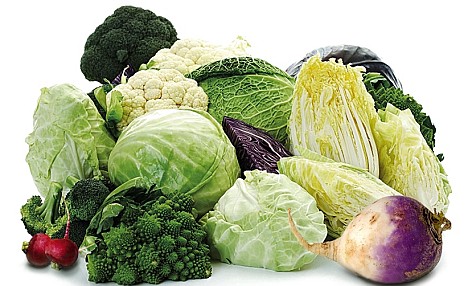
Brassicas
What to grow
A wide range of common leafy vegetables, such as cabbage, Brussels sprouts, broccoli, kale and cauliflower are all part of the Brassica genus.
Some root crops such as turnips, swedes and kohl rabi are also part of this nutritious group. Most brassicas are quite easy to grow; however, unless you’re an experienced gardener, cauliflowers are best avoided.
For a first time grower, try a variety of cabbage, Brussels sprouts or kale.
What to do
Soil preparation
- All brassica crops grow best in partial shade, in firm, fertile, free-draining soil.
- Start digging over your soil in autumn, removing any stones you find and working in plenty of well-rotted manure or compost.
- Tread on the soil to remove any air pockets and make the surface very firm.
- Brassicas will fail if the soil is too acidic so add lime to the soil if necessary, aiming for a pH of 6.5-7.5.
How to sow seeds
- Nearly all brassicas should be planted in a seedbed or in modules under glass and then transferred. Seeds should be sown thinly, as this reduces the amount of future thinning necessary and potential risk from pests.
- Sow seeds 1.25cm (1/2in) deep and rows should be spaced 15cm (6in) apart.
- Once the seeds have germinated, thin the seedlings to 7.5cm (3in) between each plant.
- Cabbage and broccoli seedlings are ready for transplanting when they’re between 6 and 8cm high (2.5-3in). Brussels sprouts and kale should be 15cm (6in).Water the day before moving, and keep well watered until established.
- Space the plants according to the instructions on the seed packet. It can vary from 30cm for small cabbages to 75cm for Brussels sprouts.
Aftercare
- Brassicas are affected by a wide range of pests and diseases, especially the fungal disease, club root. The roots become stubby and swollen and can develop wet rot, while leaves become yellow and wilt, causing severe stunting of growth. Remove any infected plants from the ground and destroy.
- Make sure the soil is adequately limed and well drained, and do not plant cabbages in the same place the following year.
- Rotate your crops annually to avoid disease. Don’t grow brassicas on the same plot more often than one year in three, as moving the crop helps avoid the build up of soil pests and diseases.
- Brassicas are a particular favourite of birds so use a deterrent to stop them picking off seedlings. CDs on string can be effective. They’re also susceptible to attack by the caterpillars of the cabbage white butterfly. Try covering crops with a crop protection mesh. It keeps the butterflies out, so they can’t lay their eggs on the plants.
Harvest and storage
- Harvesting time is dependent on crop type and variety. From July onwards, summer cabbages, cauliflower, kohl rabi and green broccoli are all ready.
- Harvest by cutting close to ground level with a sharp knife.
- With cabbages, lift the entire plant to reduce the risk of club root.
- With broccoli, harvest when the flower shoots are well formed, but before the small flower buds have opened. Timing is important, as once in flower, the shoots are woody and tasteless.
- From October well into the following year, winter and spring cabbage, Brussels sprouts, early and late varieties of broccoli, autumn and winter cauliflower, kale, kohl rabi, swede and turnips are all ready.
- Begin harvesting Brussels sprouts when the sprouts at the base of the stem have reached the size of a small nut and are tightly closed. Cut them off with a sharp knife, disposing of any opened sprouts and yellow leaves. Only remove a few sprouts at a time from each individual stem.
- With kale, start harvesting at the crown of the plant from November onwards, removing a few young leaves at a time. This stripping of the crown encourages the development of succulent side shoots to harvest between February and May.
Five Brassicas to try
- Cabbage (summer) ‘Hispi’ – good flavoured variety with medium-sized, pointed heads.
- Cabbage (winter) ‘January King’ – large, dark green frost-hardy variety.
- Cauliflower ‘Lateman’ – versatile variety with medium-sized, white heads.
- Brussels sprouts ‘Breeze’ – vigorous variety with good disease resistance.
- Kale ‘Dwarf Green Curled’ – compact, hardy and easy to grow.

